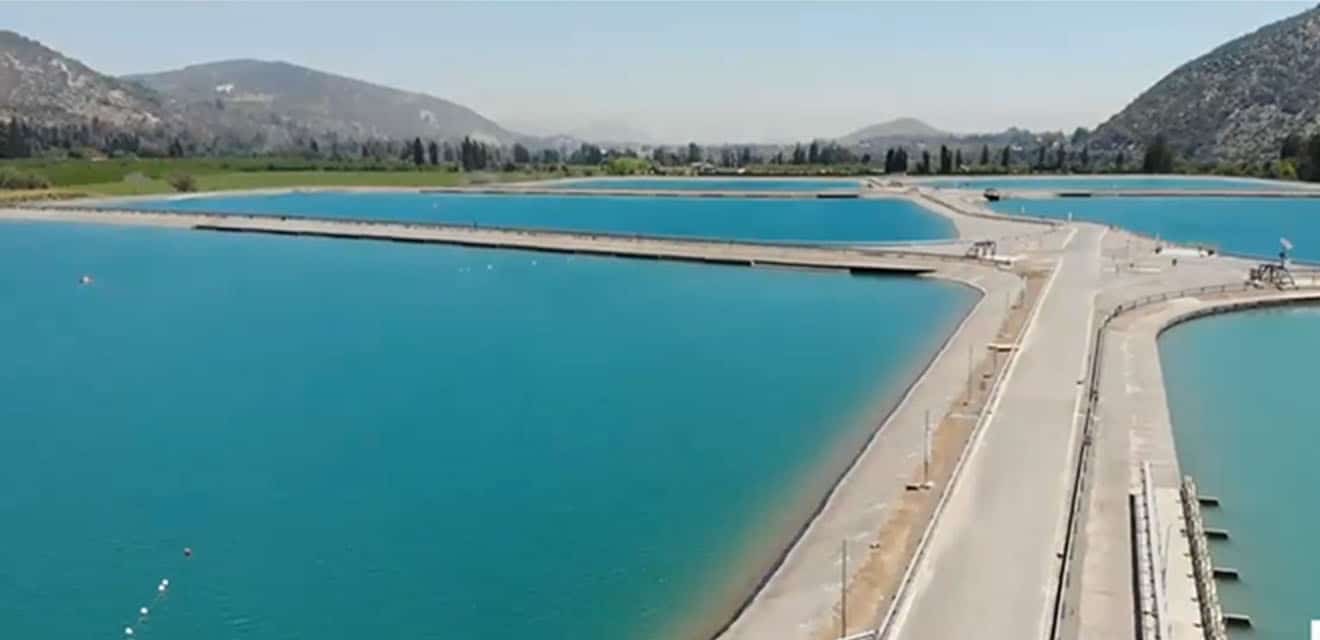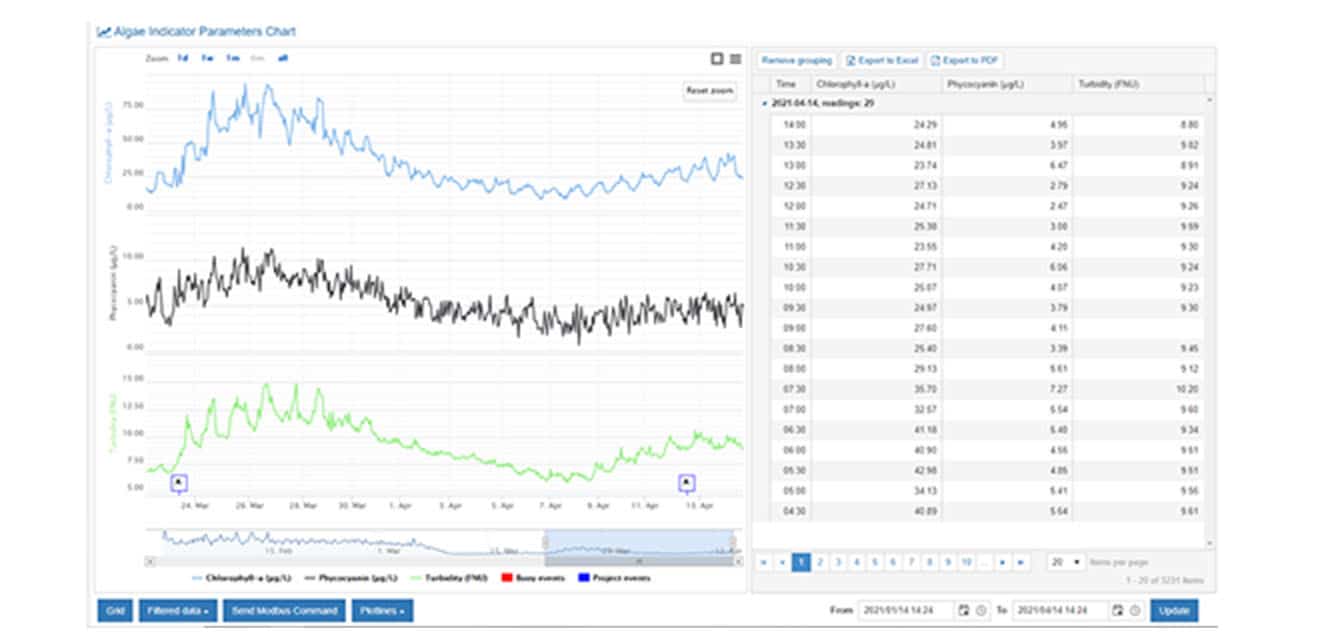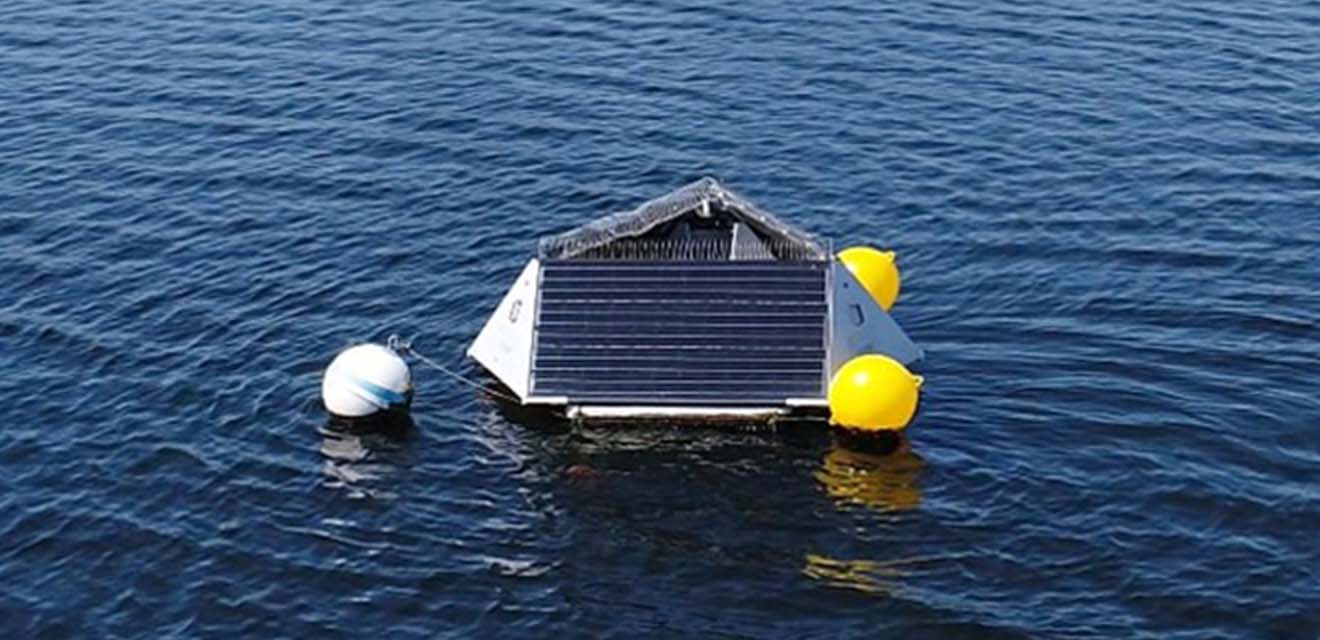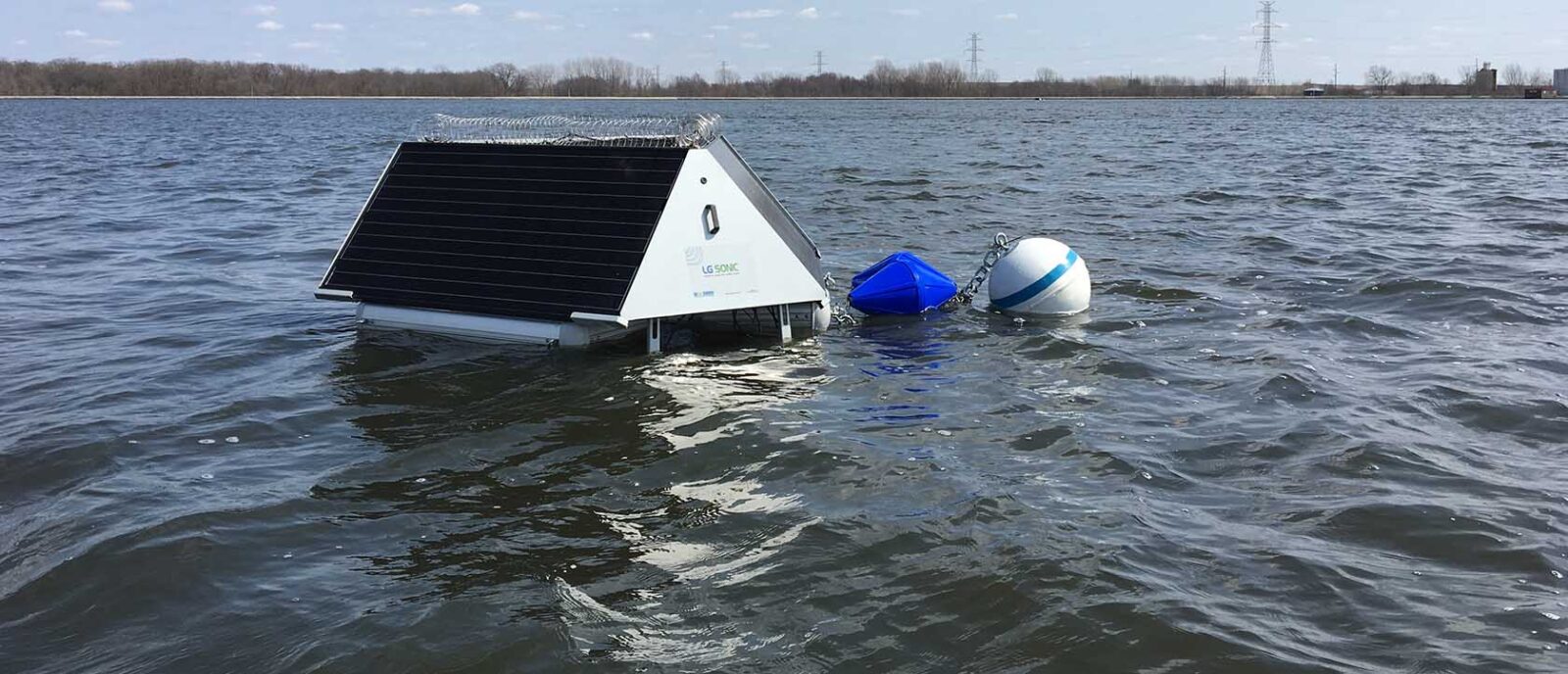In short
- Algae and their associated toxins degrade water quality and pose a risk to operational processes;
- Better policy control for nutrient load should be enforced; yet, it’s difficult to achieve at present;
- Sustainable technologies exist and can be implemented to mitigate algae-related problems.
Green waters are red flags
Blue-green algae and green algae that bloom in drinking water sources degrade water quality and are likely to end up in water treatment plants, clogging sand filters and pipes.

They produce geosmins and MIB–compounds that give water an earthy and moldy taste and smell, often resulting in customer complaints.
As these compounds can’t be removed through conventional filtration, they raise concerns about water quality and safety. Therefore, algal blooms must be eliminated at the source or later in the treatment process.
To grow, algae cells need light, water, carbon dioxide, and nutrients, which are naturally occurring in water bodies. Excessive nutrient load and increased temperatures accelerate the spread of harmful algae.
How do algae affect water treatment plants?
Within a typical drinking water treatment plant, raw water is extracted from a river, groundwater, raw water reservoir, or a combination of these. Every drinking water treatment facility is different; however, when algae appear in source water, they become a problem in most treatment processes.
The water treatment process starts with the flocculation/coagulation phase: small particles are removed from the water, as they form aggregates in the presence of coagulants or flocculants and sink to the bottom of the clarifier (sedimentation tank). This is often followed by sand filtration and, last, the Activated Carbon process.
Algae blooms can become a threat in several stages of the water treatment process, depending on the type and place of their growth. Thus, it’s crucial to tackle them at the source and prevent negative consequences within the entire water treatment system.

Often, the source of algae growth is at the intake, e.g., raw water reservoir or river. When algae appear there, treating them or their by-products can be a nuisance. In other situations, algae grow within the water treatment plant itself, most commonly in sand filters, causing fouling of the filter bed.
Pre-treatment as a solution
To prevent harmful blooms, better policy control for nutrient load should be enforced.
Excessive nutrients like nitrogen and phosphorus end up in freshwater or marine water sources. They cause eutrophic conditions, which drive harmful blooms.
However, this long-term solution depends on regulatory measures that normally take years before enforcement is properly in place—even longer for visible improvements.
Water treatment managers can employ preventative measures, such as real-time monitoring of water parameters and algae indicators. This way, they can forecast algae blooms and take proactive steps.

Parameters related to phytoplankton dynamics include Chlorophyll-a (chl-a), Phycocyanin (blue-green algae), temperature, dissolved oxygen (DO), pH, turbidity, and Redox (reduction–oxidation). These parameters offer direct and indirect information about the algal biomass concentration in the water.
Ideally, the location of algal growth should be determined and monitored. Usually, this would be a raw water reservoir or a river.
Once a bloom is predicted, it becomes easier to anticipate its effects and determine whether algae might bypass the reservoir.
A system that monitors and collects real-time water data, predicts blooms based on that information and stops algal growth is essential for optimal water treatment. This way, algae are eliminated from the source, and they can’t infiltrate the water treatment facility.
One such system is the MPC-Buoy, which can be installed within the water source for the long term. Once employed, this technology collects real-time water quality and algae data. Then, it emits a specific ultrasonic frequency that stops algae from growing.

The ultrasound doesn’t cause cell lysis. This means, algae toxins are not being released back into the water body and no other aquatic organisms are harmed.
The buoy can predict blooms 3-10 days ahead, giving water managers the chance to take proactive measures.
